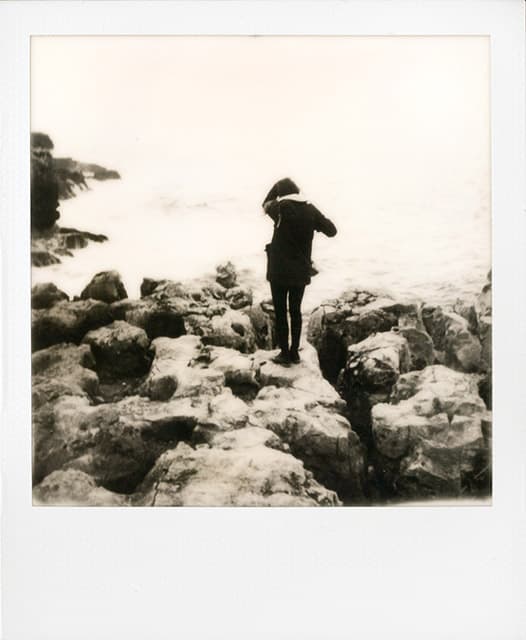The I-1 is a new instant photo camera from the Impossible Project, offering full manual control via a dedicated app.
Although the I-1 is compatible with any 600-type film, it is designed to be used with Impossible’s new I-type film which, unlike a Polaroid instant film pack, doesn’t contain batteries. Instead, the camera system is powered by a USB-rechargeable battery.
Impossible Project CEO Oskar Smolokowski said: ‘We strongly believe an instant camera is the only compelling photography offering beyond your phone. We wanted to use the power of the smartphone to make it even more capable and allow users – beginners and enthusiasts – to take their photography to the next level.’
Pierre Darnton, the firm’s managing director for the UK and Ireland, told AP that although the I-1 is fully analogue, a companion app includes a scanner that allows the user to take a picture of the developed print and crop it down for sharing on social media.

Furthermore, digital controls accessible via the app allow the user to create effects and experiment with manual controls, including a self-timer.
The app provides the user with full manual control of shutter speed, aperture, focus distance and flash via a wireless Bluetooth connection.
‘By connecting through a smartphone, which links directly to the I-1, users can experiment freely with creative tools such as double exposure, remote triggering and light painting,’ said the firm in a statement.
Creative techniques also include the ability to superimpose images onto one another.
These editing opportunities bring analogue photography to a ‘digital generation’, claims the Impossible team.
‘Once the perfect image is captured, consumers are then able to upload directly to their social channels.’
 © Andy Westlake
© Andy Westlake
Priced £229, the I-1 sports a ‘one-of-a-kind’ ring flash, to help provide diffused light with soft shadows when shooting portraits.

The ring flash comprises eight LEDs and functions such as a film-count indicator.
Also on board is a collapsible magnetic viewfinder, which can be detached to allow for ‘future Impossible technological integrations’.
This is the first camera from the Impossible Project, which, in 2008, bought the last factory in the world making Polaroid instant film.
The move came after Polaroid announced it was shutting down its instant-film manufacturing.
The Impossible Project’s bosses say that rescuing and refurbishing the Netherlands-based plant enabled them to save more than 200m Polaroid instant cameras from ‘becoming useless’.
Smolokowski added: ‘We’ve been dreaming of our own camera from day one, and are thrilled to release the i-1… When designing this camera, we didn’t want to rely on nostalgia – we believe that an instant camera rightfully belongs in 2016.
‘At the same time, there were technical realities we just couldn’t change, leaving a clear connection to the past that feels right.’
The camera’s design aims to ‘pay homage to the iconic silhouette of the Polaroid camera in an updated modern matte-black finish’.
Smolokowski continued: ‘Instant photography is one of the only ways to preserve and share instant, physical memories.
‘It’s magic to see photos develop in the palm of your hand, and then be able to hand the photo over to the person next to you.’

Technical specifications
Length: 145mm
Width: 110mm
Height: With VF 108mm/without VF 99mm (to top of lens barrel)
Weight: 440 grams (without film pack)
Materials:
Outer shells: Polycarbonate + ABS plastics with soft-touch rubberized coating
Viewfinder, Viewfinder mounting plate, strap mounts: Zinc aluminium alloy
Lenses: Optical-grade Polycarbonate and Acrylic Lenses, coated
Shutter system: Custom design, using precision step motors for shutter and focus control
Optical system:
5-zone autofocus system, using reflective IR ranging
Focal length: 82-109mm
Field of view: 41° vertical, 40° horizontal
6 lenses total, with 5 possible configurations
Flash system:
12 LED advanced ring flash, consisting of: 8 focused LEDs for increased range + 4 diffuse LEDs for softer light at closer distances (portraits).
The power of these two sets of LEDs can be controlled separately, allowing for tuning the light for different photographic scenes.








